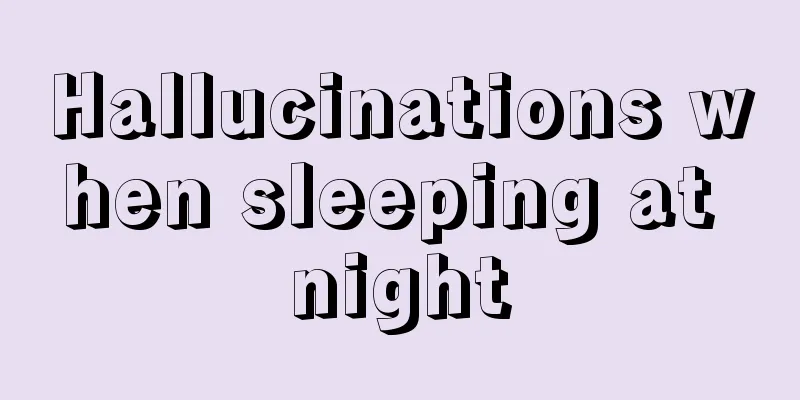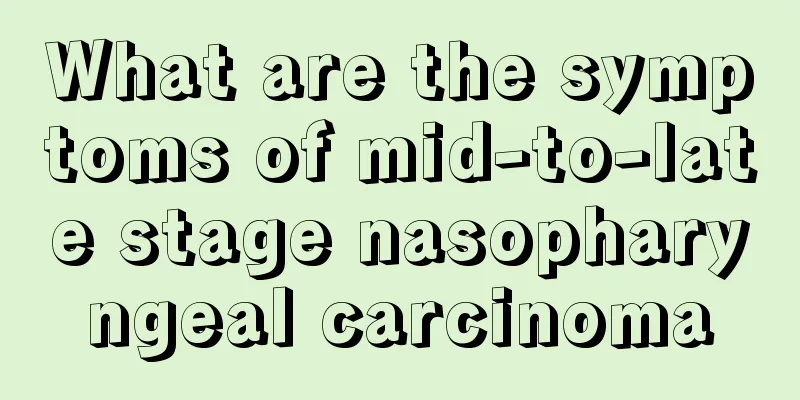Hallucinations when sleeping at night

|
Hallucinations when sleeping at night are actually closely related to physical condition. People with relatively weak physical constitutions are prone to fainting and are more likely to have hallucinations. The best way is to strengthen physical exercise and get more sun exposure to enhance the body's positive energy and physical fitness, which will reduce such hallucinations. You should also pay attention to whether this situation occurs during the day. If so, you need to go to the hospital for treatment. This article introduces the situation of hallucinations before going to bed. A concept explanation A hallucination experience that occurs during the transition from wakefulness to sleep. Most of the symptoms are hallucinations, such as seeing images of people, flowers, birds, mountains, rivers or animals, which are similar to dream experiences. It can occasionally be seen in normal people; it is more common in mental patients, such as mental disorders caused by alcohol poisoning or schizophrenia. This type of hallucination occurs before falling asleep. The patient can see hallucinatory images when closing his eyes. Most of them are visual hallucinations, such as various animals, landscapes, and individual parts of the human body. It is similar to the experience of dreaming. [1] People who have hallucinations before falling asleep should pay attention to getting more rest and taking more vitamin B12 and vitamin C. Supplement: Hallucinations before falling asleep are common in schizophrenia, but a few normal people also have this symptom. 2. Horrible hypnagogic hallucinations Hypnagogic hallucinations refer to terrifying hallucinations or dream-like experiences that occur before falling asleep (transition from wakefulness to sleep), such as vivid sensory experiences such as vision, touch, movement, and hearing, or dreams similar to those occurring during sleep. The hallucinations described by the patient are more terrifying than ordinary dreams and are sometimes difficult to distinguish, so they are also called hypnagogic nightmares. The onset of this disease is not related to age. It is very rare in the general population, has no gender difference, and often has a chronic onset. However, it is not uncommon for this disease to occur during the acute recovery period after REM sleep deprivation or suppression, and it may occur in 12% to 50% of patients with narcolepsy. Some physical diseases, such as brain degenerative diseases, dementia, Parkinson's disease, epilepsy, etc., can also cause nightmares or hallucinations, but they are not discussed in this section. 3. Identification of manifestations 1. Normal hypnagogic hallucinations Normal people may also experience hallucinations before falling asleep, but they occur at the beginning of the first stage of NREM sleep rather than in REM sleep. There are no nightmares or anxiety, and it does not affect the quality of sleep, and severe terror states rarely occur. 2. Sleep paralysis Patients with sleep paralysis often experience an inability to move their entire body and muscle paralysis that lasts for several seconds to several minutes, which can be used for identification. Polysomnography showed characteristic changes such as skeletal muscle tension suppression and REM sleep abnormalities. Sleep paralysis may also occur with terrifying hypnagogic hallucinations. 3. Nightmare It often occurs in the second half of the night, during the rapid eye movement sleep period, rather than before falling asleep. The symptoms of nightmares are basically similar to those of terrifying hypnagogic hallucinations, but the latter are more severe. 4. Sleep terrors Symptoms of sleep terrors often occur during the first 1/3 of slow-wave sleep at night, rather than at the beginning of the night. Sudden, intense attacks of fear occur during sleep and the patient may partially or completely forget the attack. Polysomnography shows that it occurs in NREM stage 3-4 or is often accompanied by symptoms of increased autonomic nervous function activity, such as tachycardia. |
<<: Can I wear amber to sleep?
>>: I wake up with numbness in my left hand when I sleep at night
Recommend
How to avoid "cutting feet to fit shoes" when wearing high heels for a long time
I believe every girl has a pair of high heels of ...
How to plan a girl's fitness plan
Nowadays, people care more about their health. Ma...
How effective is lung puncture for lung cancer treatment? Lung puncture has high requirements for doctors
Lung cancer mostly occurs in the elderly. Most pa...
Is it good to diet to lose weight during menstruation?
Losing weight is a long process for many women, e...
Symptoms of protein indigestion
We all know that the human body cannot live witho...
What are the symptoms of pneumoconiosis?
Pneumoconiosis is a relatively common respiratory...
What are the symptoms of rectal lesions?
The rectum is an important part of the human body...
What is the connection between enema treatment and pregnancy
Common female infertility must be considered to b...
Can eggplant and eggs be eaten together
Eggplant and eggs are foods we eat frequently. Eg...
Which hospital can cure gastric cancer
Gastric cancer is familiar to everyone. The first...
What to do if myopia and presbyopia occur_Can presbyopia be treated
Myopia is the most common vision problem. There i...
How to kill woodworms
Wood borers are a very common pest. They use wood...
The harm of using air conditioning in winter
When the weather is hot in summer, we turn on the...
Does exercise make you healthy? The benefits that you have to see
Exercise is very helpful for health. Exercise not...
Can brain metastasis of lung cancer be cured in the late stage? Generally it cannot be cured
Brain metastasis is a common and serious disease ...









